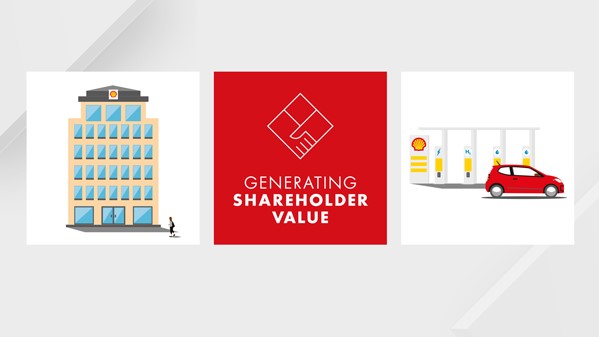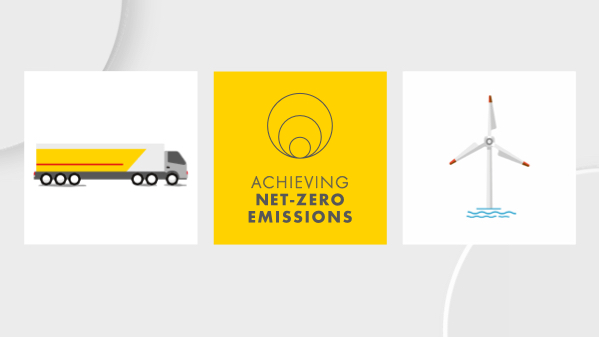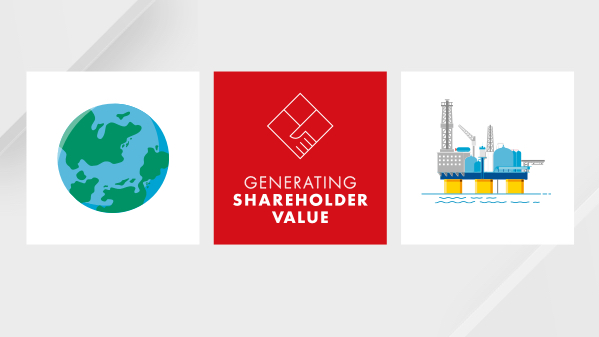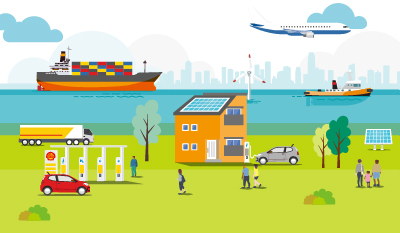Other regulatory disclosures
GHG emissions and energy consumption data – Information provided in accordance with UK Regulations
Data in this section are consolidated using the operational control approach. Under this approach, we account for 100% of the GHG emissions and energy consumption in respect of activities where we are the operator, irrespective of our ownership percentage.
Reporting on this operational control basis differs from that applied for financial reporting purposes in the “Consolidated Financial Statements”. We acknowledge the strong preference of the UK’s Financial Reporting Council (FRC) for companies to report the GHG emissions and energy consumption data using the financial consolidation boundary and are working on including the data and information on this boundary in our Annual Report in the future.
See Basis of preparation – absolute emissions.
|
2021 |
2020 |
2019 |
||||||||||
|---|---|---|---|---|---|---|---|---|---|---|---|---|---|
Total global direct (Scope 1) [A] |
60 |
63 |
70 |
||||||||||
UK including offshore area [B] |
1.71 |
2 |
2.1 |
||||||||||
Market-based |
|
|
|
||||||||||
Total global energy indirect (Scope 2) [C] |
8 |
8 |
10 |
||||||||||
UK including offshore area |
0 |
0 |
0 |
||||||||||
Location-based |
|
|
|
||||||||||
Total global energy indirect (Scope 2) [D] |
9 |
10 |
11 |
||||||||||
UK including offshore area |
0.05 |
0.06 |
0.06 |
||||||||||
Intensity ratio in tonnes per tonne |
|
|
|
||||||||||
Intensity ratio of all facilities [E] |
0.27 |
0.25 |
0.24 |
||||||||||
|
|||||||||||||
The activity data used to calculate GHG intensity ratios at a portfolio level shown in the table above is reported on an operational control basis. As a result, it is not directly comparable with the production data reported elsewhere in this Report, which is reported on a financial control basis. The table below shows the numbers used in the calculation of the intensity:
|
|
2021 |
2020 |
2019 |
||||||
|---|---|---|---|---|---|---|---|---|---|---|
A |
8.1 Scope 1 – Direct GHG emissions [A] |
60 |
63 |
70 |
||||||
B |
8.2 Scope 2 – Energy Indirect GHG emissions [A] |
8 |
8 |
10 |
||||||
C=A+B |
Total Scope 1 and 2 GHG emissions [A] |
68 |
71 |
80 |
||||||
D |
6.5 Total oil and gas production available for sale [B] |
128 |
149 |
166 |
||||||
E |
6.6 Refinery crude and feedstock processed [B] |
84 |
99 |
124 |
||||||
F |
6.3 Chemicals total production [B] |
25 |
26 |
24 |
||||||
G |
6.4 LNG production [B] |
10 |
8 |
9 |
||||||
H |
6.6 GTL production [B] |
6 |
6 |
6 |
||||||
I=D+E+F+G+H |
Total Upstream, Integrated Gas and Downstream activity [B] |
253 |
288 |
329 |
||||||
J=C/I |
GHG intensity ratio [C] |
0.27 |
0.25 |
0.24 |
||||||
|
||||||||||
Energy use in our operations
The energy consumption data provided below comprise own energy, generated and consumed by our facilities, and supplied energy (electricity, steam and heat) purchased by our facilities for our own use.
Energy consumption data reflect primary (thermal) energy (e.g. the energy content of fuels used to generate electricity, steam, heat, mechanical energy etc.). This includes energy from renewable and non-renewable sources. Own energy generated was calculated by multiplying the volumes of fuels consumed for energy purposes by their respective lower heating values. Own energy generated that was exported to third-party assets or to the power grid is excluded. Thermal energy for purchased and consumed electricity was calculated using actual electricity purchased multiplied by country-specific electricity generation efficiency factors (from IEA statistics). Thermal energy for purchased and consumed steam and heat was calculated from actual steam/heat purchased multiplied by a supplier-specific conversion efficiency, or a generic efficiency factor where supplier-specific data were not available.
Our energy consumption decreased from 241 billion kilowatt-hours (kWh) in 2020 to 223 billion kWh in 2021, in line with the decrease in our Scope 1 and 2 GHG emissions. Around 1% of the energy we used in 2021 for our operations came from low-carbon and renewable sources.
|
2021 |
2020 [A] |
2019 |
||
|---|---|---|---|---|---|
Own energy generated and consumed |
|
|
|
||
Total energy generated and consumed |
189 |
205 |
220 |
||
UK including offshore area |
6.2 |
7.6 |
7.6 |
||
Purchased and consumed energy |
|
|
|
||
Total purchased and consumed energy |
33 |
36 |
44 |
||
UK including offshore area |
0.2 |
0.2 |
0.2 |
||
Energy consumption |
|
|
|
||
Total energy consumed |
223 |
241 |
264 |
||
UK including offshore area |
6.4 |
7.8 |
7.8 |
||
|
|||||
In 2021, we implemented a variety of measures to reduce the energy use and increase the energy efficiency of our operations.
Examples of some of the principal measures taken in 2021 are listed below (with estimated total savings of around 675 million kWh in 2021):
- At our Scotford upgrader facility in Canada, we completed several projects to minimise energy use and improve efficiency, for example by installing new equipment and making changes to how some equipment operates.
- At our Gannet asset in the UK, we completed a project to enhance the efficiency of the fuel gas compressors by fine-tuning their performance to the specific needs of the platform.
- At our Jurong Island site in Singapore, we installed a second stage flash vessel to recover the heat for reuse in other equipment, and completed a project to minimise power consumption by one of the incinerators.
- At our Rheinland site in Germany, we completed several projects to reduce energy use and improve efficiency, for example, by installing more efficient equipment and changing maintenance schedules to improve efficiency.
- At our Bukom site in Singapore, we completed a project to reduce the consumption of natural gas in flare purge
- At our Scotford refinery and chemical site in Canada, we completed several projects to reduce energy use and improve efficiency, for example, by enabling the reduction of steam usage.
- At our QGC operations in Australia, we implemented a project to reduce power requirements for gas compression.
Examples of some of the principal measures taken in 2020 are listed below (with estimated total savings of around 385 million kWh in 2020):
- At our Clipper facility in the UK, we completed a project to optimise the use of compressors.
- At our Bukom facility in Singapore, we completed two projects to minimise energy loss from steam.
- At our Scotford upgrader facility in Canada, we completed several projects to minimise energy use and improve efficiency, for example by removing equipment from service or replacing it with more efficient equipment.
- At our Geismar facility in the USA, we improved flare staging and temperature control which resulted in lower levels of natural gas consumption.
- At our Mobile facility in the USA, we installed new equipment to increase heat transfer between heat exchangers to improve the energy efficiency of the units.
- At our GTL facility in Qatar, we completed several projects to reduce energy use and improve efficiency, for example by minimising the generation of excess steam and converting excess energy into electricity for export to the public grid.
- In Brazil, we reduced fuel usage of vessels by optimising how they operate in dynamic position, stand-by and navigation modes.
The targets in this “Climate change and energy transition” section, including those relating to the net carbon intensity targets, are forward-looking targets based on management’s current expectations and certain material assumptions and, accordingly, involve risks and uncertainties that could cause actual results, performance or events to differ materially from those expressed or implied herein.
Eu taxonomy regulation
The EU Taxonomy Regulation, adopted by the European Union in 2020, is designed to encourage investment in an environmentally sustainable economy by creating uniform definitions of sustainability for investors. Although as a UK company Shell is not currently subject to the regulation, we have prepared a voluntary disclosure in accordance with its requirements. For further information, see “Supplementary Information – EU Taxonomy Disclosure”.









